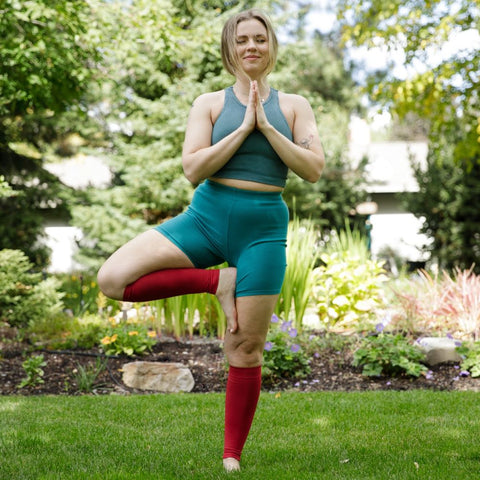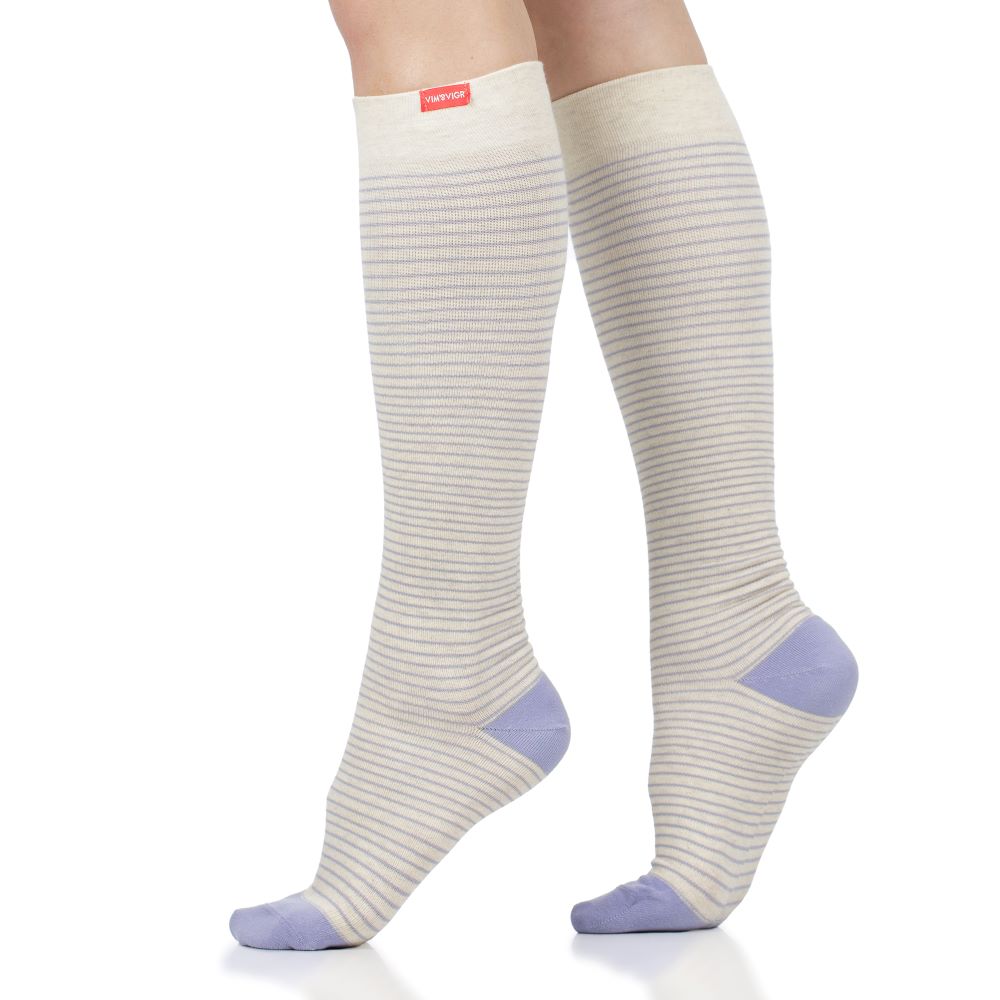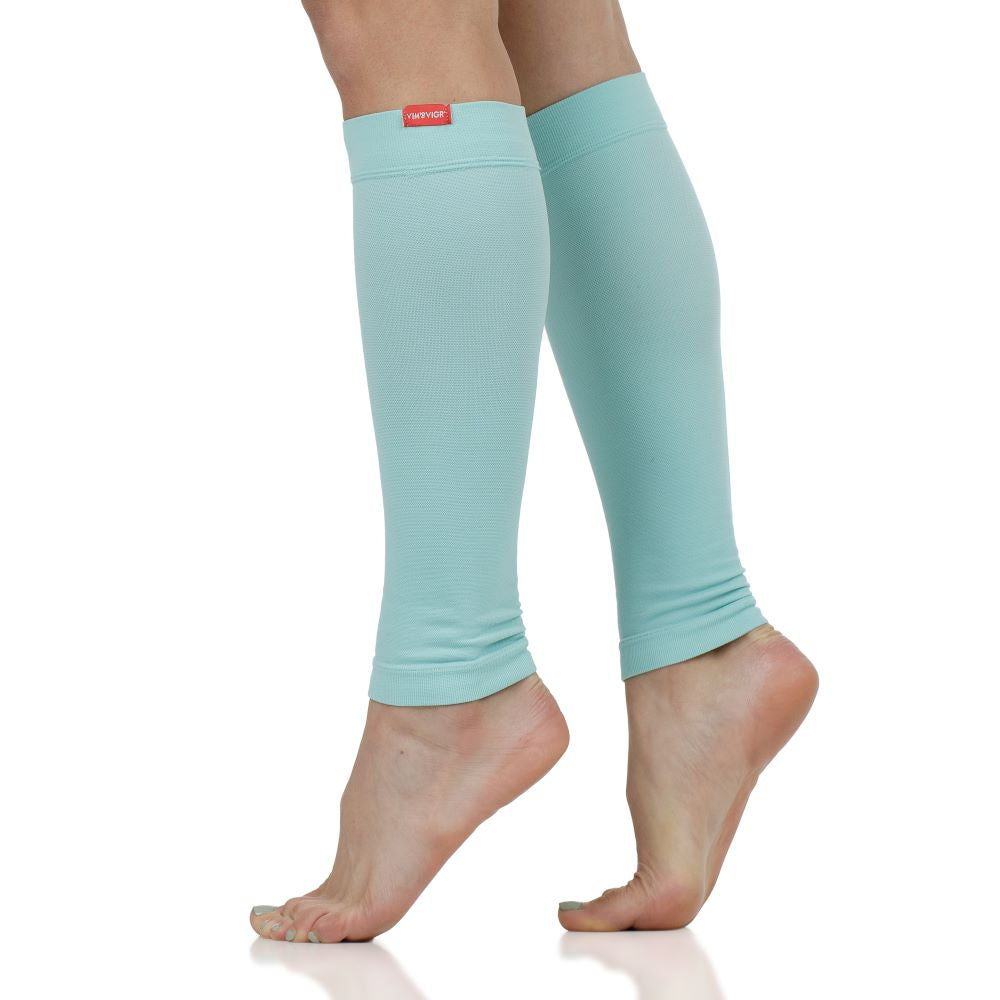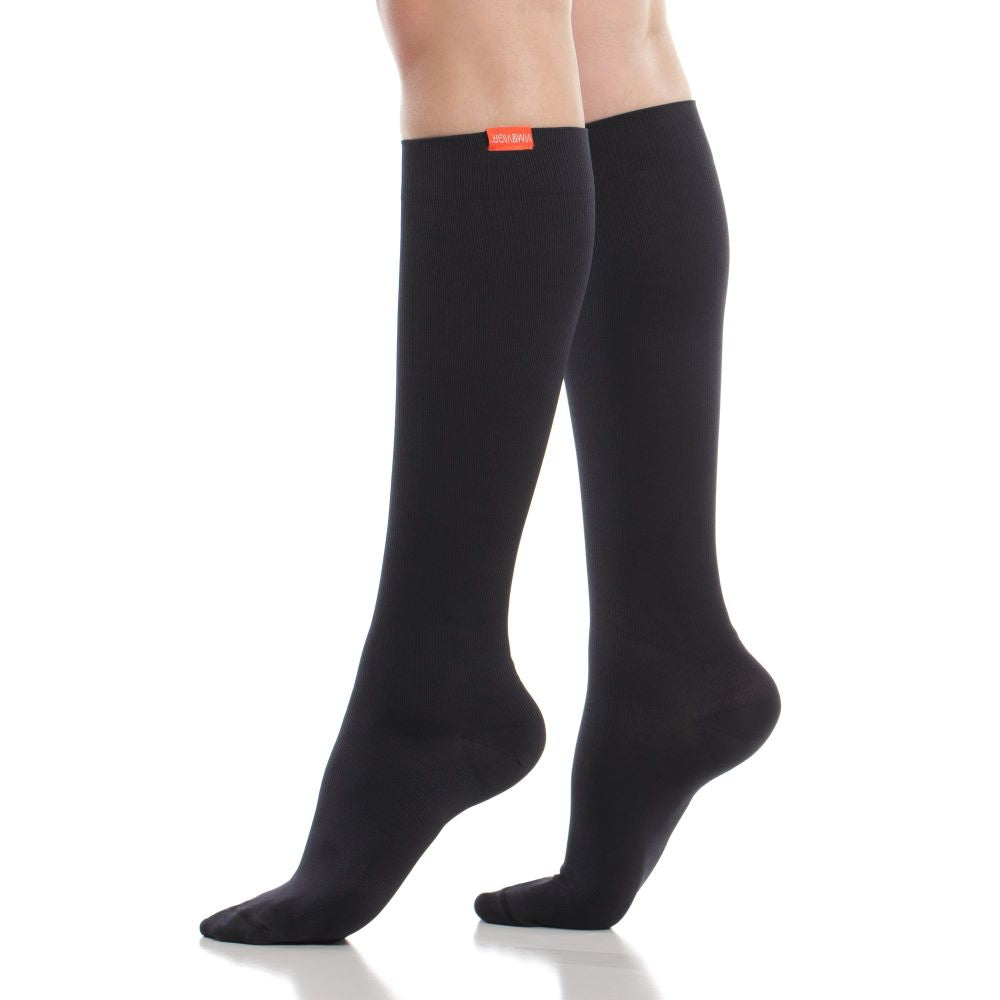Tips to Walk Long Distances Without Pain
Walking is one of the best forms of exercise. Not only is it the primary mode of transportation that humans have used for as long as we’ve been around, but it is also a great form of cardiovascular exercise, along with delivering strength and mental health benefits. A walking routine - especially when performed at a brisk pace - can be all you need to maintain good blood circulation, joint flexibility, and all-around health and wellbeing.
However, what happens when walking becomes painful? We’re not talking about being sore from exercise. After being on your feet a long time, you may develop aches and discomfort for a number of reasons. Whether you’re using walking as a way to decompress, for cardio exercise, or to tick off all your sightseeing objectives on vacation, being sore will ruin it for you quickly.

This is why we’ve put together some key tips to help you walk long distances without pain. In this article, you’ll find out:
- What usually causes pain when walking;
- How to prepare for long-distance walking;
- Key tips for avoiding pain and discomfort;
- How to manage discomfort when you walk long distances;
- How to recover after your long walks.
Common Causes of Pain While Walking Long Distances
Let’s say you’re starting to enjoy a long walk during your weekends or that you’re planning to walk a lot during a vacation abroad. The more time you spend on your feet, especially if you haven’t prepared for it, the more stress you’ll be placing on your musculoskeletal and cardiovascular systems. Although walking is less impactful than running, it’s still significant. Here are the main reasons why you could get sore on your next big walk.
Musculoskeletal Problems
Painful walks are often caused by issues in your body’s joints, bones, or muscles. These are described as musculoskeletal problems and can include:
Poor Walking Posture
Sometimes, feeling better when walking is about something as simple as straightening your back and looking up. We often slouch in our everyday lives, especially if we have desk jobs where we sit in front of a computer all day. Taking this into your walk can mean that your shoulders and upper back begin to hurt.
Additionally, walking can be very similar to running when it comes to aches and pains. This is the case when you have poor walking posture and/or form. If you routinely walk with your feet pointing inwards or outwards, instead of straight ahead, you could be putting pressure on your knees and hips, and over time, on your lower back, causing pain in all these areas.
Footwear Issues
Very often, the key to making walking less painful is wearing the right shoes. Old, battered sneakers have lost their cushioning, so can lead to aches and pains in the soles of your feet. Over time, wearing inappropriate footwear can have repercussions up your legs, starting with the ankles.
For long-distance walkers, inadequate footwear might also include shoes or boots that don’t have enough arch support, that don’t protect the ankles, or that fail to protect the toes from hitting rocks when walking.
Health Conditions
Some minor health problems can cause pain when walking. These include foot issues like bunions, calluses, sores, and warts. If you’re suffering from an infection anywhere on your legs or feet, this will also make walking painful.
Other conditions that affect walking include plantar fasciitis (causing pain in the heel and bottom of the foot), bursitis (soreness on the outside of the hips), or shin splints.

In more serious situations, movement disorders, such as Parkinson’s disease, will affect your ability to walk. Lower-back pain when walking can be caused by spine problems, or sometimes even by kidney issues.
Dehydration and Poor Nutrition
Sometimes, it’s not the muscles, joints, or bones that cause issues when walking for the whole day or even a few hours. General feelings of weakness and discomfort can be caused by lack of proper food and hydration. Dehydration leads to a fuzzy head and possibly making poor decisions, as does lack of nutrition.
Preparing to Walk Long Distances
To avoid any negative experiences when setting out for long walks or making walking a regular form of exercise, you simply have to prepare adequately. Here are some tips for long distance walking that anyone can apply.
Choose Proper Footwear
Start with your feet. After all, they’ll carry you throughout! Sturdy walking shoes or hiking boots are built to withstand different weather conditions and varying terrain. They’ll protect the soles of your feet, your toes, and your ankles, so that you can enjoy walking for longer.
Make sure you get fitted for shoes by a professional, as very often, you need to wear slightly thicker socks with them to avoid blisters. This means that hiking and walking shoes are best worn in a half size bigger than your regular shoes.
Consider Compression Socks
A pair of compression socks can make a huge difference for walkers’ comfort. They not only provide a gentle massage to the lower limbs, relieving aches and pains, but compression therapy is excellent for preventing swelling and the formation of blood clots while standing up for long periods of time.
Graduated compression socks are tighter at the ankle and slowly less tight towards the knee, stimulating blood flow upwards towards the heart. This supports good blood circulation and keeps the muscles refuelled with oxygen and nutrients, reducing pain and fatigue while walking.
Finally, wearing compression socks when walking gives you a little bit of extra support for the joints and muscles, reducing the impact of micro-vibrations as you go through the motions. Another small benefit that can have a massive long-term impact on energy levels and prevent injury.

Hydrate
Always ensure you have water (with some added electrolytes if it’s really warm out) with you when you walk long distances. A small bottle can fit in any rucksack and will help you stay hydrated throughout the day. Hydration is also most effective when done consistently, so ensure you are well hydrated before you start walking, too.
Stretch and Warm-Up
Another important element of any exercise routine is stretching and warming up. This helps avoid strains and sprains, but should be done carefully. It’s best to do some light, dynamic stretching before walking or running, rather than very long, static stretches.
How to Walk Long Distances Without Pain
Approach long distance walking like any type of exercise. You need to have the right posture and ensure that your movements are optimized so you don’t injure yourself. Here are some easy tips for walking.
Posture
Keep your head high and look ahead when walking. Make sure you’re not slouching or leaning too far forward or back (check your posture in the mirror or ask a friend to watch you to ensure this).
When you look ahead, don’t focus on the ground just in front of you, but look ahead a few steps instead. Your brain will still register your immediate surroundings, but you’ll hold your back straight and you will move slightly faster.
Stride Length and Cadence
Some walkers and runners hurt their hips and legs by over-striding. This means taking really big steps forward, making it slightly unnatural and straining the hip flexors. Instead, shorten your stride a little and focus on “fast feet” - moving a little quicker, which will give you more stability on uneven terrain. All this will protect your hips and knees over long distances.
Arm Swing
When you walk in nature, swinging your arms in a forward-to-back motion will give you a little extra stability and some additional momentum. You can add walking poles for even more speed and efficiency. It’s important to ensure your arms move parallel to your trunk and that you’re not swinging sideways when you move them.
Foot Strike
When walking, your feet should stay about hip-distance apart, with toes pointing forward. This protects your knees from injury and makes you more efficient.
Walking Speed
Through practice, you need to find a walking speed that works for you, so that you don’t exhaust yourself too quickly. After all, you want to enjoy your long distance walking. Don’t focus on going too fast, especially at the beginning, so you don’t injure yourself by accident. Instead, ensure you have good form, and the speed and efficiency will follow.

Managing Discomfort While Walking Long Distances
No matter how well versed you are in walking and hiking, anyone gets sore from time to time! Here are a few tips for managing those “down” moments.
Take Rest Breaks
Especially if this is the longest distance you’ve walked in a while, or if it’s your first time walking long distances, ensure you plan some regular rest breaks. You can take advantage of this time to refuel, have a drink, and take in the views. It’s a win-win for your endurance and for the enjoyment of the day!
Stretch as You Walk
If you start feeling tightness in your muscles you can have a short stretch as you walk. You can do this as part of your rest break. Similarly, after walking for a while, especially with a big rucksack, put your bag down and rotate your arms forwards and backwards a few times, then stretch your shoulders a little. This will do wonders for your posture.
Take Painkillers if Necessary
This really depends on your medical condition, but sometimes, painkillers can help you get through a tough moment in your long walk or hike. Check with your doctor what medication is the most appropriate for you.
Recovery Tips for Long Distance Walking
Once you finish a long walk, it’s important to recover well and take care of yourself before setting off again. This applies to multi-day adventures, as well as to when you take one long walk regularly (weekly, for example). Follow these tips to feel fresh and energized on your next walk.
Rest
Rest is essential for recovery after any type of exercise. You need to give your body time to adapt to the exertion it’s been through, which makes you stronger over the long term. Sleep well, at least 8 hours a night, and put your feet up when you’re done walking. Ensure you always take rest days, too - don’t walk too much, too often.
Hydrate
Refuel and rehydrate after a long walk to get nutrients and fluid back into the body. When you are well hydrated and nourished, your muscles repair quicker and you will be ready to get back out there sooner.
Ice and Heat Therapy
Depending on how you feel after your walk, both cold and warm therapy can help you recover. Icing sore muscles can reduce inflammation, although it’s been proven more recently that rest and compression are more effective, especially after an injury.
Heat therapy is a good option if you have a sore spot that can benefit from some release and you cannot get a massage. Apply a heat patch to a sore shoulder or neck area, for example.
Stretching and Massage
As part of your cool-down routine, you should do a few easy stretches to wind down. Then, a massage can be beneficial for working through any kinks and tight spots in your muscles.
Wear Compression Socks
Whether or not you get a massage, wearing compression socks during your recovery helps stimulate blood flow in the lower limbs and decreases the likelihood of your ankles swelling after a long day on your feet. Compression is one of the recovery techniques that’s unanimously agreed to make it easier and quicker to relax sore muscles, avoid swelling and irritation, and reduce inflammation. So, put your feet up and spend a couple of hours in your recovery compression socks after every walk.



















Leave a comment